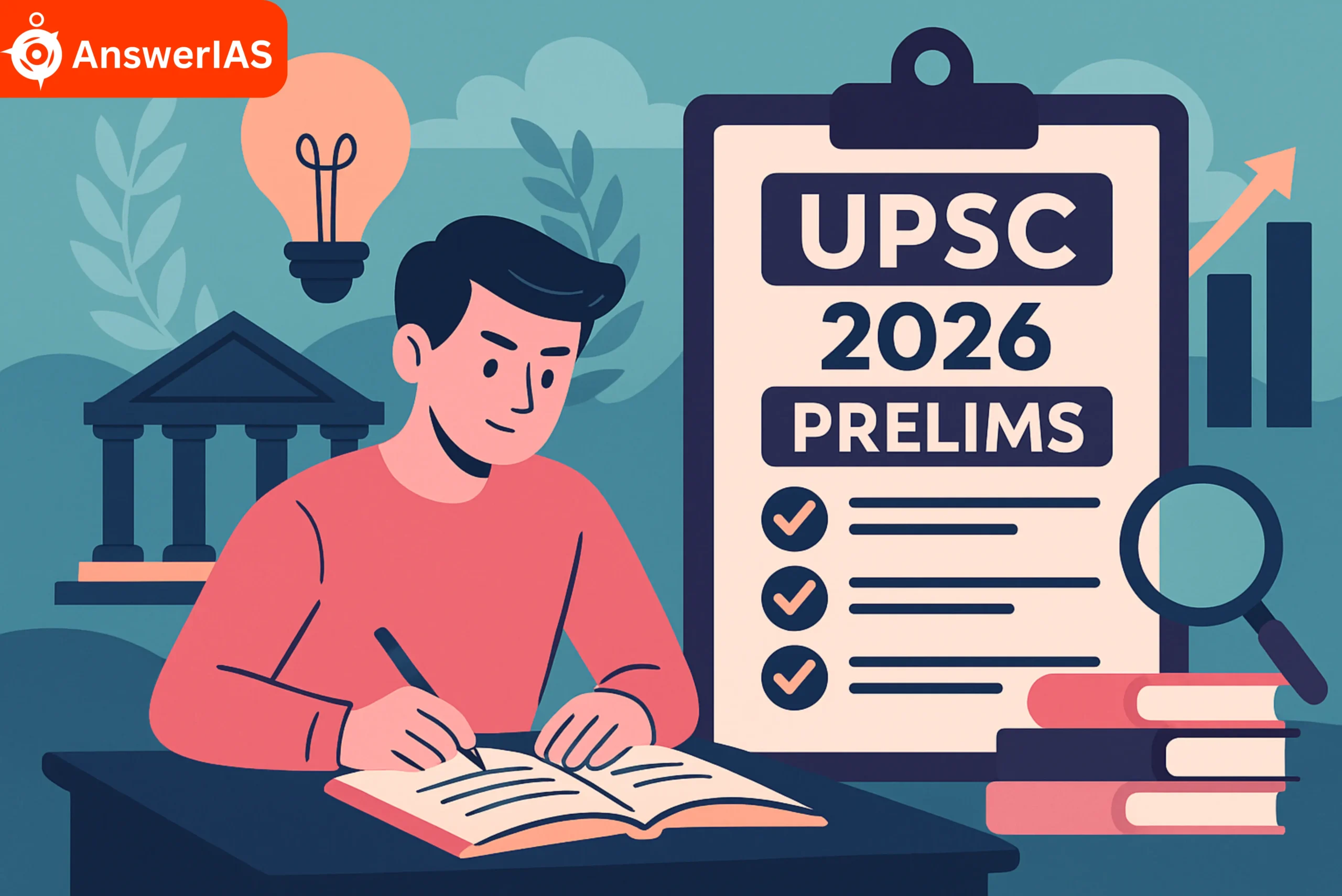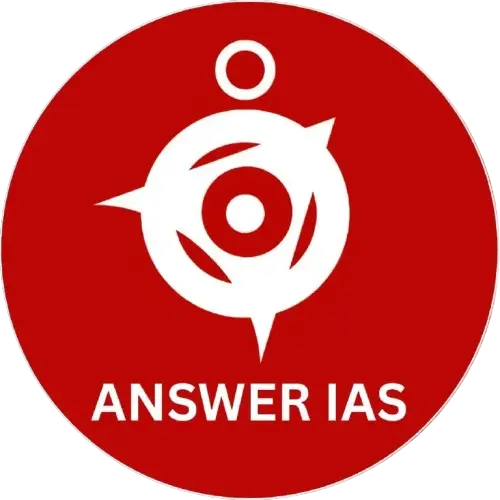
Many of aspirants are preparing for UPSC Prelims 2026 and feeling overwhelmed by the vast syllabus. The unpredictable nature of the UPSC civil services examination prelims makes it difficult. The key to cracking the UPSC exam lies in understanding the UPSC exam format. Mastering Previous Year Questions (PYQs) can help aspirant to pave the path for success.
In this article, we’ll unravel the secrets to decoding PYQs. Also , understanding the UPSC Prelims question paper, and building a structured preparation strategy to ace the UPSC CSE Prelims.
General Introduction to UPSC Exam for Beginners
The UPSC Civil services exam consist of Prelims , Mains and Interview stages. Through this candidate can selected for IAS IPS IFS etc like post in government of India. The Prelims consist of two papers General Studies Paper 1 and General Studies Paper ii (CSAT). The Main exam of civil services examination cse consist of GS, Optional Subjects , Essay and Indian Language papers.
Candidate can download the UPSC Syllabus from here.
UPSC Prelims 2025 was conducted on 25 May 2025. It was conducted across various exam centres nationwide. Candidates who practiced with regular mock tests found the paper manageable. The UPSC Prelims result 2025 is expected soon.
Many aspirants are eagerly awaiting the outcome after the admit cards were released on 22nd January 2025, helping them prepare strategically.
Why UPSC Exam is Not Unpredictable
The UPSC Civil Services Prelims is often labeled as the “Most Unpredictable Public Service Commission Exam.” However, it’s not unpredictable. It’s simply unfamiliar to those candidate who haven’t mastered the art of analyzing PYQs.
The exam date of UPSC civil services preliminary examination 2026 is May 24, 2026 (Sunday) as given in UPSC Calendar. By understanding the UPSC exam format and diving deep into prelims paper of UPSC. UPSC aspirant can align your preparation with the exam’s core essence. PYQs are your roadmap to success, guiding you through the UPSC Prelims paper and helping you prioritize high-yield topics.
The Importance of PYQs in UPSC Preparation
Previous years question papers are more than just past questions. They’re a blueprint for the UPSC Prelims 2026. Here’s why they’re critical:
- Understand the Exam Pattern: PYQs reveal the UPSC exam format, including the types of questions (direct, assertion-reason, pair-based, etc.) and the weightage of subjects like Polity, History, Geography, and Current Affairs.
- Identify High-Yield Topics: By analyzing UPSC Prelims question papers, you can pinpoint recurring themes like Fundamental Rights, Money Bills, or the advent of Europeans in Modern Indian History.
- Master Question-Solving Techniques: PYQs help you develop a common-sense approach to eliminate incorrect options and tackle tricky questions.
- Predict Future Trends: Past papers offer insights into emerging trends, such as calculation-based questions in Economics or issue-based questions linked to Current Affairs.
Decoding the UPSC Prelims 2026: The Insider Approach
To crack the UPSC Civil Services Prelims, adopt the Insider Approach—a structured strategy to analyze and decode PYQs. Here’s how it works:
1. Investigate Themes and Patterns
Start by analyzing UPSC Prelims question papers from the last 10-13 years to identify recurring themes and subjects. For instance:
- Polity: Fundamental Rights, Directive Principles of State Policy (DPSP), Money Bills, and Centre-State Relations are frequently tested.
- History: The advent of Europeans (e.g., Portuguese, Dutch, and British East India Company) and their cultural impact are hot topics.
- Environment: Plastic pollution, species-based questions (e.g., pollinators, IUCN status), and air quality are recurring themes.
- Current Affairs: Issues like India-Portugal ties or RBI’s role in regulating banks often inspire questions.
Pro Tip: Create a thematic mind map for each subject to track high-weightage topics.
2. Understand the Nature of Questions
The UPSC Prelims paper tests various question types:
- Direct Option-Based: Straightforward questions with one correct answer (e.g., features of a Parliamentary System).
- Multiple Statement-Based: Questions with two or more statements where you evaluate their correctness.
- Assertion-Reason: Evolving formats, like one assertion with two reasons (introduced in 2024).
- Pair-Based: Matching items, such as tribes with states or historical events with years.
- Chronology-Based: Questions on event sequences or rankings (e.g., countries with mineral wealth).
- Issue-Based: Questions linked to Current Affairs, like low birth rates or air quality guidelines.
Example: In 2024, a question on Portuguese-introduced crops was linked to India-Portugal diplomatic ties, highlighting the interdisciplinary nature of UPSC CSE Prelims.
3. Source Selection and Streamlining
Not all sources are equal. Focus on high-yield materials based on PYQ analysis:
- NCERTs: Foundational for History, Geography, and Polity.
- Standard Books: For Polity, rely on M. Laxmikanth; for Art and Culture, check Nitin Singhania or NIOS material.
- Current Affairs: Use PT365, newspapers, and official government websites for schemes and reports.
- Avoid Overloading: Don’t chase trendy books—select sources that help you solve PYQs accurately.
Example: Questions on Dhanyakataka (a Buddhist center) came directly from NCERT maps, emphasizing the importance of sticking to reliable sources.
4. In-Depth Analysis
Go beyond memorizing facts. Understand the essence of topics:
- For Polity, grasp why India adopted a Parliamentary System (e.g., Council of Ministers’ accountability to Lok Sabha).
- For History, explore the cultural and economic impact of Europeans, not just dates and events.
- For Environment, link plastic pollution to sources like microbeads or cigarette butts.
Analyze all options in PYQs, as incorrect options often reappear in future papers (e.g., Ajanta Caves vs. Ellora Caves).
5. Research and Note-Making
Create concise notes based on PYQ trends:
- Polity: Cover Centre-State relations, bills, and constitutional amendments.
- Economics: Focus on RBI’s functions, digital currency, and sectoral concepts (primary, secondary, tertiary).
- Geography: Study map-based questions (e.g., Andes Mountains, North Sea borders) and interdisciplinary links with IR.
- Current Affairs: Track schemes like Digital India Land Records Modernization or Rashtriya Gokul Mission.
6. Leverage Your Strengths and Weaknesses
Identify subjects where you excel (e.g., Polity) and aim for 90-95% accuracy. For weaker areas (e.g., Culture), focus on high-yield themes identified through PYQs.
IAS Exam Timing and Format for 2026
The UPSC Prelims 2026 consists of two papers:
- General Studies (GS) Paper 1: 100 questions, 200 marks, 2 hours. Covers History, Geography, Polity, Economics, Environment, and Current Affairs.
- CSAT (Paper 2): 80 questions, 200 marks, 2 hours. Qualifying in nature (33% required). Tests Quantitative Aptitude, Logical Reasoning, and Comprehension.
UPSC Exam Timing:
- GS Paper 1: Typically 9:30 AM to 11:30 AM.
- CSAT Paper 2: Typically 2:30 PM to 4:30 PM.
Key Tip: Don’t underestimate Civil services aptitude test (CSAT). Many aspirants fail due to lack of practice. Enroll in a structured UPSC online coaching program for CSAT to ensure speed and accuracy.
Top Strategies to Ace UPSC Prelims 2026
- Start Early with PYQs: Don’t wait until February or March to analyze UPSC Prelims question papers. Integrate them into your preparation from day one.
- Focus on Interdisciplinary Links: Connect topics across subjects (e.g., Portuguese history with India-Portugal IR).
- Elimination Techniques: Use extreme words (e.g., “all,” “none”) to eliminate incorrect options in PYQs.
- Stay Updated with Current Affairs: Use AnswerIAS Current Affairs platform. Official websites to cover schemes, reports, and international events.
Emerging Trends for UPSC Prelims 2026
Based on recent PYQ analysis, here are trends to watch:
- Calculation-Based Questions: Economics questions on deficits or sectoral contributions now require formula-based understanding.
- Implication-Based Questions: Topics like wet bulb temperature or air quality guidelines test conceptual clarity.
- Defense and Security: Questions on fighter aircraft, military exercises, or ranks are gaining prominence.
- Map-Based Questions: Expect questions on geographical features (e.g., Andes Mountains, Congo Basin) with IR or economic angles.
- Scheme-Based Questions: Focus on schemes like Digital India, Rashtriya Gokul Mission, or Safe Motherhood Campaign.
Conclusion: Your Path to UPSC Success
The UPSC Civil Services Prelims is not about collecting facts but understanding the essence of topics. By decoding PYQs, you can transform the “unpredictable” UPSC exam into a familiar challenge. Start with the Insider Approach, leverage UPSC online coaching, and practice consistently to build clarity, confidence, and competence. Your journey to becoming a district collector begins with mastering the UPSC Prelims 2026—start today!
Ready to ace the UPSC Prelims 2026 ? Do let us know in comment.

Comments (1)
UPSC CSE Prelims 2026: Exam Date, Syllabus, Eligibility, Admit Card, and Preparation Guide - AnswerIASsays:
July 23, 2025 at 11:59 am[…] Prelims through PYQs […]